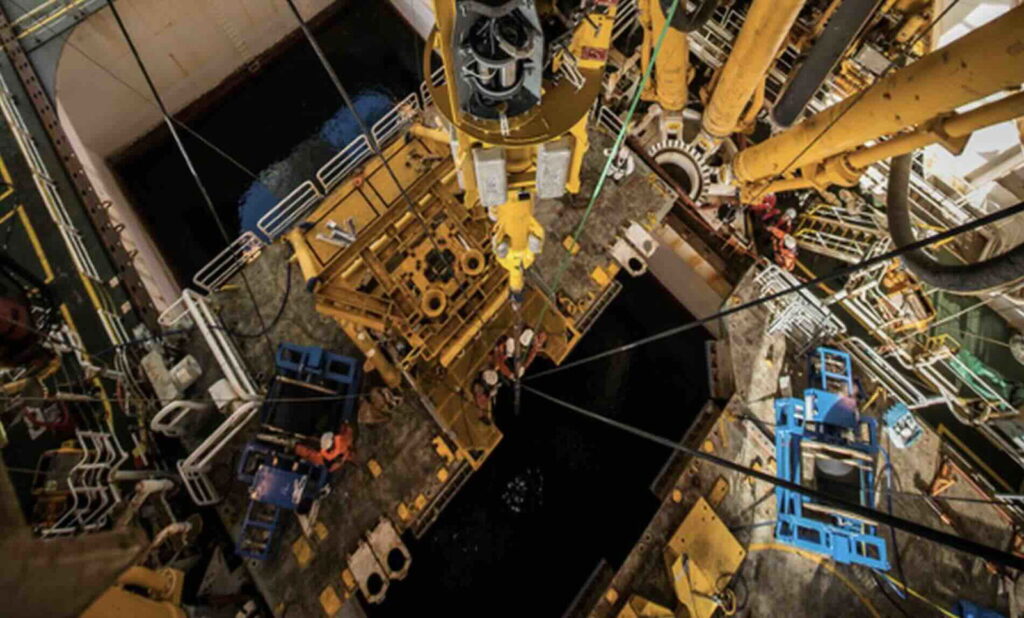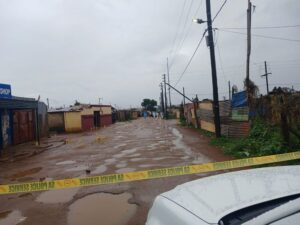
Screenshot
In a groundbreaking scientific achievement, researchers have successfully tracked the elusive motion of “silent” earthquakes during a seismic event along a major fault zone on the ocean floor. This phenomenon, known as a slow-slip earthquake, was observed exerting tectonic pressure as it moved along a fault region off Japan’s coast, an area historically prone to generating tsunamis.
The recent findings, detailed in a study by scientists at the University of Texas at Austin, describe these slow-slip earthquakes as functioning like a shock absorber. This research, published in the journal Science, marks a significant advancement in understanding seismic hazards and their potential to release tectonic pressures without triggering devastating tsunamis.
A Fault Line Slowly Unzips
Josh Edgington, a doctoral researcher at the University of Texas Institute for Geophysics (UTIG), likened the phenomenon to “a ripple moving across the plate interface.” Slow-slip earthquakes, sometimes referred to as “silent earthquakes,” release energy over extended periods—ranging from hours to months. Although not entirely silent, these events are distinct from the rapid rupture velocities that cause tsunami earthquakes.
The detailed measurements obtained by the UT Austin team along Japan’s Nankai Fault represent a breakthrough that could reshape how scientists address seismic hazards. Importantly, the research shows how these events can ease tectonic pressures without causing tsunamis.
Tracking “Silent” Earthquakes
The research team utilized precision borehole sensors installed near the fault’s shallow reaches beneath the ocean trench in 2015. Unlike land-based monitoring technologies, which often struggle to detect subtle offshore fault movements, these sensors recorded seismic events at scales as small as a few millimeters.
During the 2015 observations, the sensors captured a slow-slip earthquake creeping along the fault closest to the seafloor—the same area where tsunamis are generated. Fortunately, this event helped ease tectonic stress in this hazardous location, preventing a tsunami.
Five years later, a second slow-slip tremor followed a similar path. By analyzing both events, researchers demonstrated that each lasted several weeks, with the earthquakes moving along the fault before dissipating at the edge of the continental margin.
Another key finding was that both seismic events coincided with higher-than-normal fluid pressures in the Earth’s crust. This supports the long-held hypothesis that fluids play a significant role in driving slow earthquakes, a theory that had remained unconfirmed until now.
A History of Major Seismic Events
The Nankai Fault is no stranger to seismic activity. In 1946, a major earthquake along this fault killed 1,300 people and destroyed nearly 36,000 homes. The 1946 earthquake registered as a magnitude 8 event, and while similar major seismic events are anticipated in the future, the recent observations suggest that slow-slip earthquakes may dissipate some of the pent-up energy, particularly at the shallow end of the fault.
“This discovery points to a part of the fault that releases tectonic pressure independently of the deeper, more hazardous segments,” said UTIG Director Demian Saffer, who led the research team.
Seismic Concerns Along the Ring of Fire
The implications of these findings extend beyond Japan. They could help refine existing earthquake and tsunami hazard models, applicable not only to undersea regions off Japan’s coast but also to other areas along the Pacific Ring of Fire.
Another region of concern is the Cascadia subduction zone off the U.S. Pacific Northwest, where similar slow-slip phenomena have been detected, although not at the tsunami-generating end of the fault.
“Cascadia is a place that we know has hosted magnitude 9 earthquakes and can spawn deadly tsunamis,” Saffer noted. “Are there creaks and groans that indicate the release of accumulated strain, or is the fault near the trench deadly silent?”
“Cascadia is a clear top-priority area for the kind of high-precision monitoring approach that we’ve demonstrated is so valuable at Nankai,” Saffer added.
The team’s findings were detailed in the paper, “Migrating shallow slow slip on the Nankai Trough megathrust captured by borehole observatories,” by Josh Edgington, Demian Saffer, et al., published in Science on June 26, 2025.







